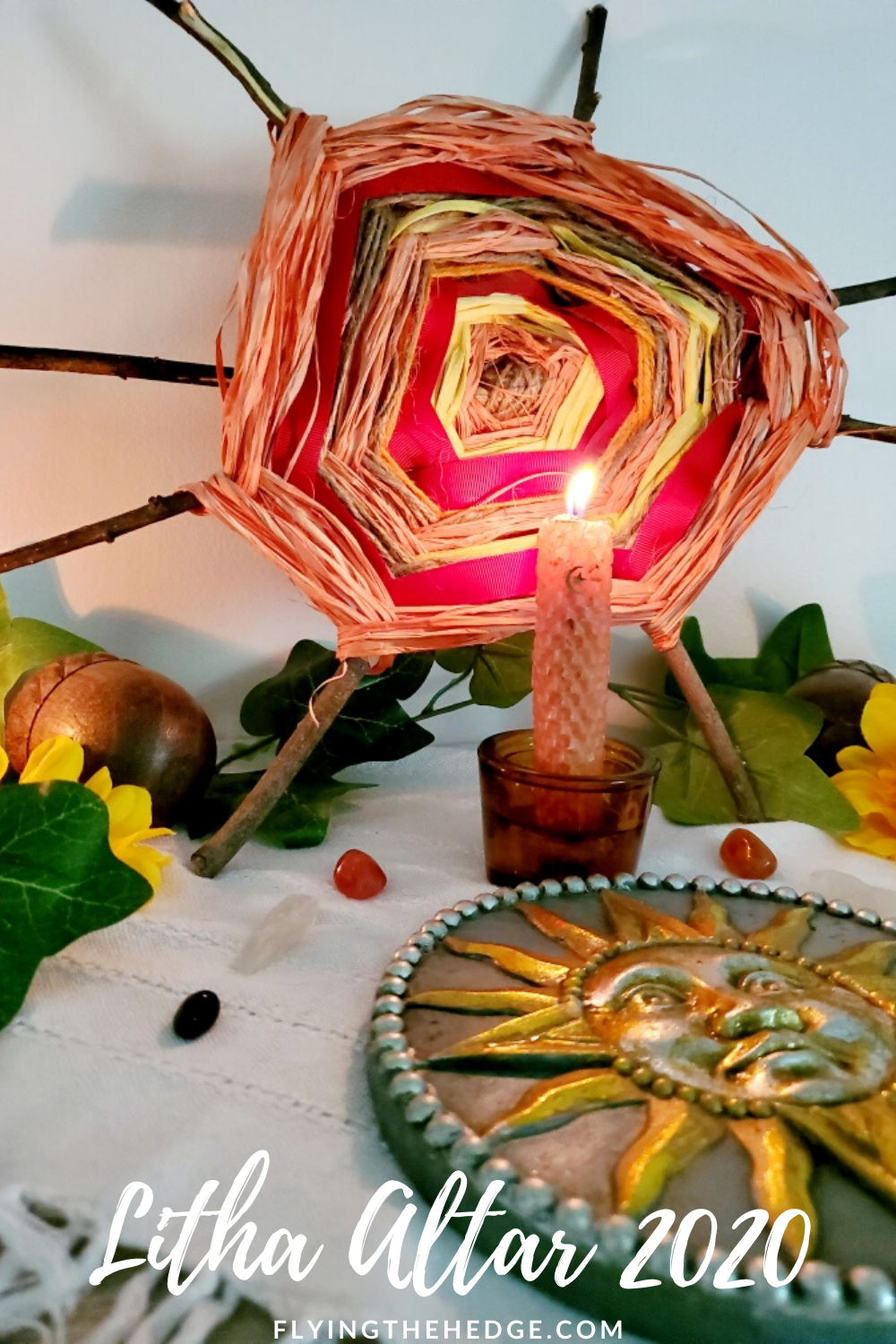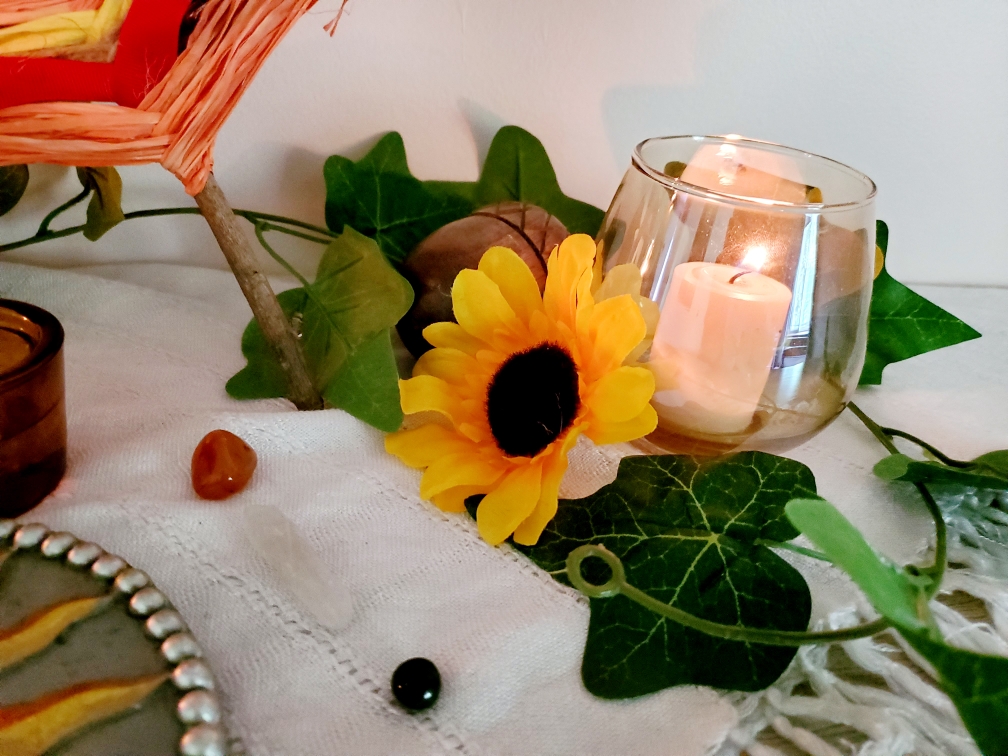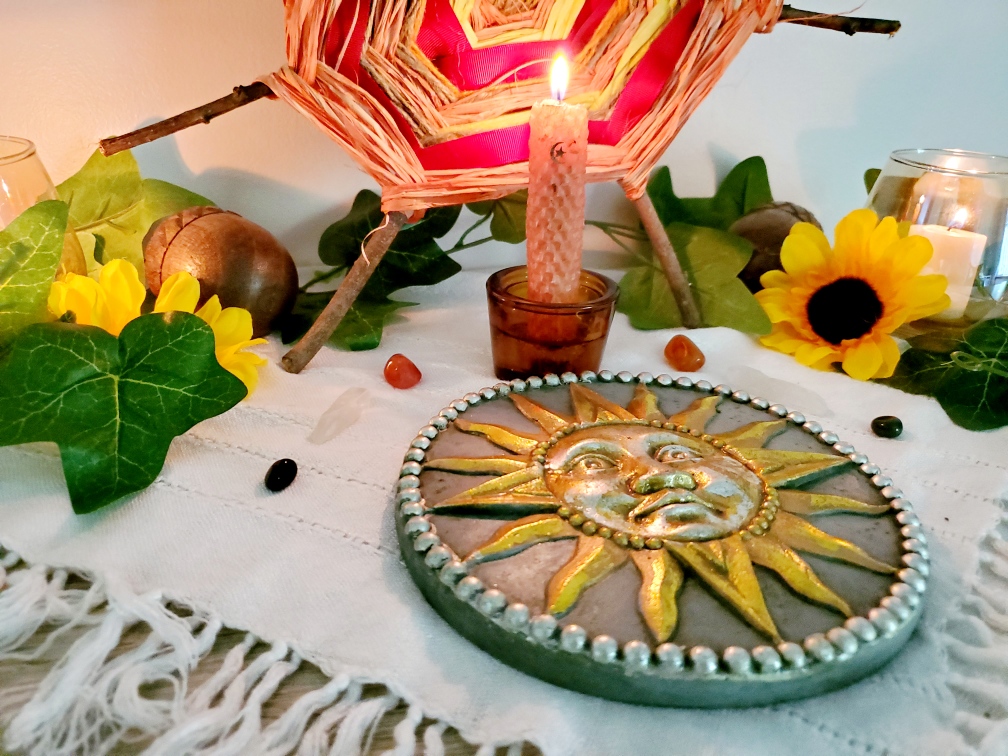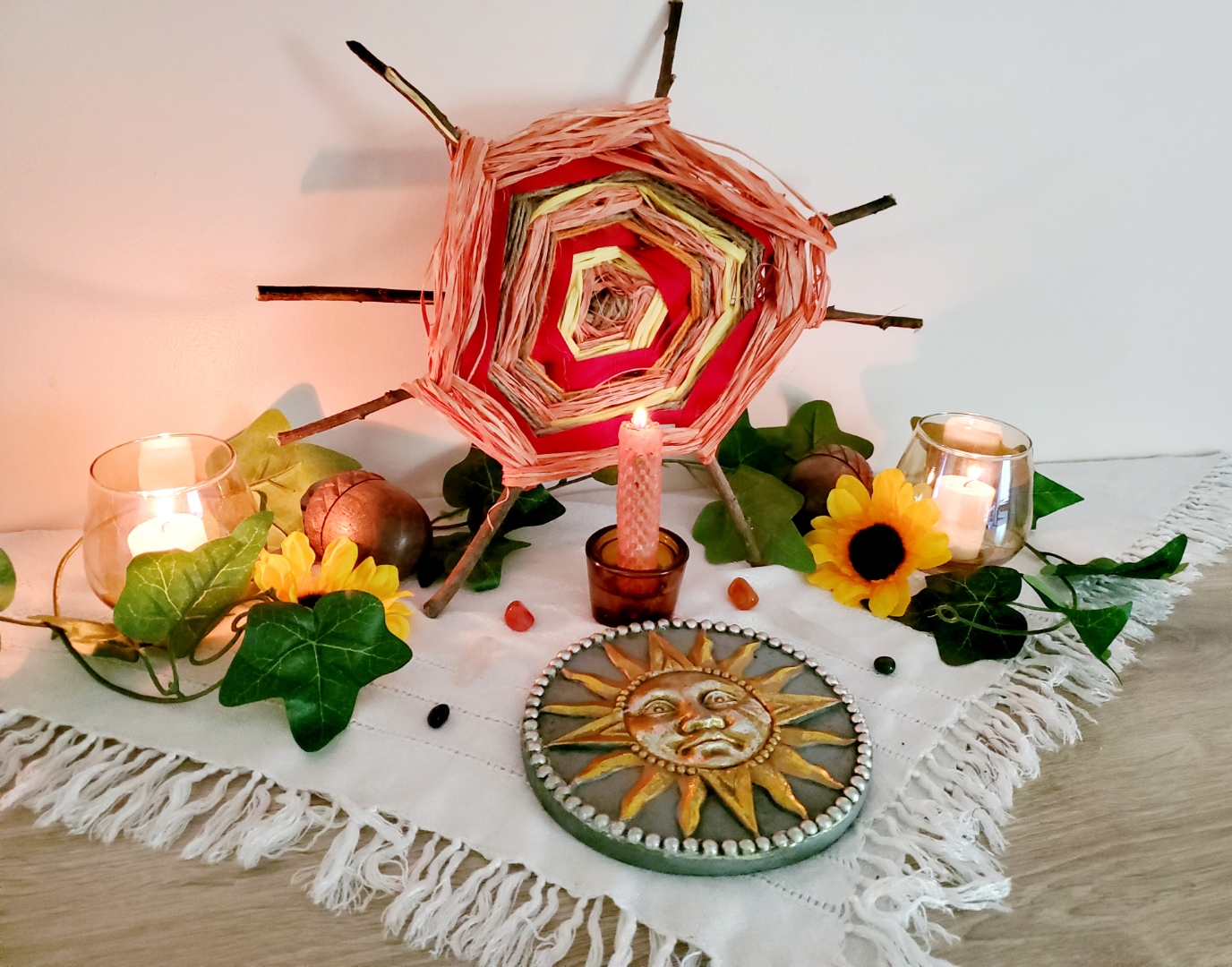Our third stop in the series is the element Fire. Fire is quite the element, associated with new beginnings, energy, courage, anger, passion, lust, war, and purification. It's the perfect element to work with during the summer months when the Sun is at its strongest, the ultimate source of Fire. Fire is also the perfect element to work with when trying to enact change, especially social change. After working with Water and Earth, its time to burn away the old and bring in the new. You can use Fire to break bad habits, purify your life, ignite your passions, and incite change. Unlike Earth, Fire has a long and rich history in folklore, from how man first acquired Fire to the Celtic Fire festivals still celebrated by witches today. Again, this is a lengthy post, but well worth the read. Let's get started.

Fire has long been coveted by humankind as not only a life-bringer but as a source of transformation as well. How we first acquired Fire is debatable and we will likely never know, but the fact that we did allowed humans to prosper and ultimately dominate our surroundings. There are myths found in every single culture around the world explaining how humans first acquired Fire, from the Greeks to the Cherokee to the Hindus to the Aztecs. Almost all of these stories tell a story of theft, the Fire is stolen from some greedy source and given as a gift to humans. In Greek mythology, the titan Prometheus stole Fire from the gods, giving it to man along with the skill of metalwork because he loved humans more than the Olympians who had banished his family to Tartarus. This gift resulted in the progress of civilization and ultimately resulted in Fire temples across Greece. In various Native American tribes in the Pacific Northwest and First Nations, Fire was stolen by Coyote, Beaver, or Dog and given to humans, while in Algonquin myth it is Rabbit that steals Fire from a man and his two daughters to share with other humans. The Cherokee myth, however, is my favorite of the Native American Fire myths. After both Possum and Buzzard failed to acquire Fire, Grandmother Spider weaves a web to sneak into the land of the light, where she steals Fire from the Sun and hides it in a clay pot. She brings the clay pot back, giving it to humans so they may see in the dark. In
Rig Veda, a Hindu text, it is Matarisvan who steals Fire that had been hidden away from humans. All of these myths reveal the nature of Fire; that is it deeply associated with trickery and chaos, most likely because we may think we have control over Fire, but ultimately it is in control. Furthermore, Fire is extremely destructive but transformative, thus leading to the progress of civilization in all of these stories.
Fire was so revered by our ancestors that shrines, temples, and festivals were dedicated to Fire. In Ancient Greece, every private and public hearth or prytaneium was regarded as a sanctuary for the hearth goddess Hestia. In Greek mythology, Hestia was assigned the duty by Zeus to feed and maintain the fires in the Olympian hearth with the fat from animal sacrifices to the gods. As such, she was usually given the first offering during a sacrifice so that she may share a portion with the gods to maintain their Fire. While most of her shrines were the hearths in private and public places, there were at least two temples in Ermioni and Sparta that were dedicated to her alone. Each city had a public fire dedicated to Hestia that was not allowed to burn down. Failure to maintain her fire was a breach of duty and was viewed as bad luck. However, her fires were ritually extinguished and relit and when a new colony was established, flame from Hestia's public hearth was carried to light the fires in the new settlement. Hestia's Roman equivalent, Vesta, played a much more prominent role in Roman culture. She was very rarely depicted in human form, but instead as a flame. Vesta's temple in the Forum Romanum only allowed entry to Vesta's priestesses known as Vestals. The Vestals tended the sacred hearth fires of Vesta which were believed to be indispensable for the preservation and continuity of the Roman State. The sacred fire was so important that water was not allowed into the inner aedes nor allowed to stay in nearby areas for longer than needed. If water was needed, it was carried in futiles, vessels with a tiny foot that made them more stable. Should the fires be extinguished, it was believed something terrible would befall the Roman empire. Vesta was so revered that her festival Vestalia from June 7th to the 15th was regarded as one of the most important of the Roman holidays. On the first day of Vestalia the penus Vestae was opened for one day only so that women could offer sacrifices to Vesta. Mothers would come, disheveled and barefoot, to ask for blessings for their families. A donkey, the animal sacred to Vesta, was crowned with flowers and bread and honored. Vesta's importance was so deeply entrenched in Roman thought that it was one of the very last of the pagan cults to remain after the rise of Christianity until it was disbanded by Theodosius I in AD 391.
Across the ocean, two important Celtic deities were honored for their scared flames. The first was Brigid, who later was Christianized St. Brigid. Brigid, who is deeply associated with holy wells, was also associated with sacred flames. In Kildare, Brigid's sacred fire was tended to by priestesses since pre-Christian times. Many attempts were made to extinguish the flames after Christianity dominated the isles, but were unsuccessful until the sixteenth century when monasteries were suppressed. The sacred flames were relit in 1993 by Mary Teresa Cullen, the former leader of the Brigidine Sisters, a group of nuns dedicated to St. Brigid. Since 1993, the scared fire has burned bright, being maintained by 19 nuns at St. Brigid's sanctuary. It was rumored that the sacred flame was originally surrounded by a hedge that no man could cross. Any man who attempted to cross was said to go mad, die, or become crippled, leaving only women to tend to Brigid's fire. Brigid is most often celebrated at Imbolc, a fire festival, also known as St. Brigid's Day on February 1st, where she is said to breathe life-giving warmth back into the Earth. Candles are ritually lit as a form of sympathetic magic to coax the Sun's return and honor Brigid. However, it wasn't just Brigid who was associated with Fire in Celtic lore. Belenus (Belus or Baal), whose name means "Shining One," was one of the most widely worshipped of the Celtic deities. He was the Celtic god of the Sun and was celebrated year-around, but honored specifically at Beltane, an ancient Fire festival on May 1st. There are at least 51 known inscriptions describing Belenus across Celtic Britain and Iberia and even mentions in Roman texts. Like Brigid, Belenus had scared fires dedicated to him and from these fires, bonfires, also known as balefires, were lit upon the hilltops the night of Beltane. Cattle and other farm animals were herded between theses fires to remove all impurities and keep the animals free from illness until the following Beltane. Some sources state that people would leap over these great fires as well to purify themselves and protect them in the upcoming year. Hearth fires were also extinguished, ashes cleaned out, and replaced with fire from the sacred flames of Belenus to bring in purity and new beginnings to the home. All of these deities and their resulting festivals and shrines encompass the importance of Fire in human history as a bringer of life, a purifier, a protector, and an agent of change.
Other Sun gods from around the world, including Ra, Aten, Nanahuatzin, Helios, and Sol, were worshipped year around with the Sun's heavenly movement. Early humans recognized that as the Sun traveled through the sky that it drove the changing of the seasons. From this knowledge, myths arose to explain what happened to the Sun god during each transformation. In modern Wicca, the equivalent of this story traces the birth and death of the God, who represents the Sun. These myths were so prevalent around the world that early Christianity adopted them and associated them with Jesus. Sympathetic magic, charms, and spells were often used to coax the return of the Sun, keep up the heat, or honor the Sun's death. As mentioned before, candles are lit at Imbolc as a form of sympathetic magic, while the Yule log is lit at Yule for the same reason, as well as to bring health and good luck to those within. At Midsummer, also known as Litha, sun charms were created to keep up the heat so that the crops could continue to grow and thus produce a bountiful harvest. Our ancestors recognized that after the summer solstice that the Sun waned in strength. These charms were designed to keep the Sun strong enough for the remaining growing season else they would not have enough stores to make it through the winter months. Prior to the introduction of mistletoe, the Irish used apples as part of an All Saints Day sun charm to protect against glamour and witchery during the dark half of the year. Basically, these charms were believed to shed light on trickery.
Apart from Fire's association with deities, it has long been viewed as a protective force. This likely arose from the fact our early ancestors found that keeping fires lit through the night safeguarded against beasts of the night. Fire quickly became associated with warding off evil spirits, especially in the case of childbirth. Multiple cultures around the world light candles and lamps and keep them burning to ward against demons waiting to pounce on the newborn child and mother. This custom still persists in parts of Britain, Scandinavia, and Germany, where candles and fires are lit around the new baby to keep evil spirits away. Some of these tales refer to changelings stealing away newborn babes, while others suggest demons are waiting to claim the baby for the devil. Other folklore customs include waving candles over newlyweds to protect against unwanted guests, while in France jumping over a candle flame is said to ward against sickness and bring good luck. The nursery rhyme, Jack Be Nimble, is an ode to this custom. As mentioned earlier, this was also the reason cattle were driven between bonfires on Beltane. Fire is also considered a purifier, being able to cleanse one of disease. Among the Nandi, cattle are driven through fire and coated with milk to cure disease outbreaks within the herd. The Chukchee drive away evil spirits from their reindeer using a similar custom to that of the Celts, driving the reindeer close to a sacred fire so that "the breath of fire" could drive away contamination. Despite its association with driving away evil spirits, Fire has also been used to lead spirits on their journey. In Hinduism, a lamp is placed before the dying person to help guide their spirit to Yama. On Samhain, jack-o'-lanterns were traditionally carved and placed in windows and along walkways to not only ward off evil spirits that crossed the veil but also to guide their ancestors home.
Fire has also been used as a form of divination and as an omen. As mentioned earlier, the extinguishing of Hestia's and Vesta's fires were believed to be ruin and bad luck. The Banyoro in Central Africa and the people of British New Guinea will not hunt the following morning if their fire goes out overnight, an omen of bad luck and death. In modern Greece, the behavior of logs in a fire is said to foretell the future. Crackling means that good news or a friend is coming, while sparks and ash flying are believed to foretell trouble and anxiety brewing. On the other hand, in parts of Britain cinders were read to predict major future events, such as births, marriages, and deaths.
The vast amount of folklore around Fire suggests a few things. First, Fire is an important source of life. It warms, cooks food, and inspires. Second, Fire is an important protector and purifier, yet has the ability to consume all that it touches. In modern times, witches use fire for these same reasons, often as in protection rituals, and to send messages to the spirit world.
Below is a quick correspondence guide for Fire, including a free printable page for your Book of Shadows!
Gender: Masculine
Planet: Sun, Mars
Time: Noon
Season: Summer
Direction: South (although in the Southern hemisphere, North may work better for you)
Tarot Cards: Wands or Swords (depends on belief system)
Zodiac: Aries, Leo, Sagittarius
Symbolism: Energy, will, destruction, strength, courage, power, passion, lust, sexuality, anger, war, new beginnings, protection, loyalty, transformation, action, movement, achievement, creativity, desire, willpower
Symbols: Athame, candles, swords, wands, dagger, lamp, flame, volcano, Sun, stars, lava, heat
Deities: Vesta, Hestia, Morrigan, Brigid, Belenus, Freya, Ra, Horus, Prometheus, Vulcan, Hephaestus, Agni, Pele, Ogun, Oya, Sekhmet, Zhurong, Huilu, Jowangsin, Kojin, Fuji, Amaterasu, Arshi Tengri, Odqan, Yal-un Eke, Alaz, Vut-Ami, En, Eate, Alpan, Kamar, Aed, Grannus, Nantosuelta, Sethlans, Logi, Mariel, Cacus, Dazhbog, Kresnik, Peklenc, Svarog, Shapash, Gerra, Gibil, Ishum, Nuska, Chantico, Mixcoati, Xiuhtecuhtli, Iansa
Nature Spirits: Salamander, dragon, phoenix, chimera, djinn
Colors: Red, yellow, orange, gold, crimson, white
Food and Drink: Chili, tea, coffee, beans, curry, onion, garlic, cider, cloves, cinnamon, wassail, garlic bread, beef, ham, oranges, lime, lemon, lemonade, limeade, orange juice, marmalade, spicy foodsHerbs: Cinnamon, cloves, ginger, allspice, basil, cacti, marigold, chilis, garlic, mustard, nettle, onion, heliotrope, hibiscus, juniper, lime, orange, red pepper, poppies, thistle, coffee, jalapenos, lemon, cumin, saffron, coriander
Crystals and Gemstones: Carnelian, red jasper, bloodstone, garnet, ruby, agate, rhodochrosite, gold, pyrite, brass, fire opal, lavastone, tiger's eye
Animals: Lion, snake, coyote, fox, ladybug, bee, shark, scorpion, horse, mantis, tiger
How does Fire work with the other elements?
Fire with Earth: Fire can be used to melt Earth into magma or reshape it into precious crystals, while Earth can be used to smother Fire. Fire can scorch Earth, providing life-giving nutrients and allowing new life to prosper.
Fire with Water: While Water is often used to extinguish Fire, Fire can be used to heat Water, turning it into steam, thus connecting it with the element Air.
Fire with Air: Fire can be used to connect with Air through steam and smoke, and while Air can use used to blow out Fire, Air also breathes life into it, allowing it to become uncontrollable quickly.
Your task for the next week or so is to track how the Sun moves over your home and how it affects the surrounding area. Which rooms receive the most light at which times? How does this affect the temperature in those rooms? If you have a green space or a yard, which parts of it receive Sun and at what times? Look at the plants that grow in these areas and make a note. I encourage you to make a sketch of both inside and outside your home and shade in the areas that receive Sun and mark which times they occur. Drawing hash marks is a great way to do this. Areas that receive Sun for most of the day will end up being darker than those areas that receive little Sun. Tracking the Sun's movement is another way to build a more localized practice.
Next week I will dive into how to connect more deeply with Fire using a simple yet effective ritual.
Interest in the rest of the series? Here's what's to come!Elemental Magic Series
If you liked this post and would like to support future content, please consider leaving a small tip in the jar. 

































